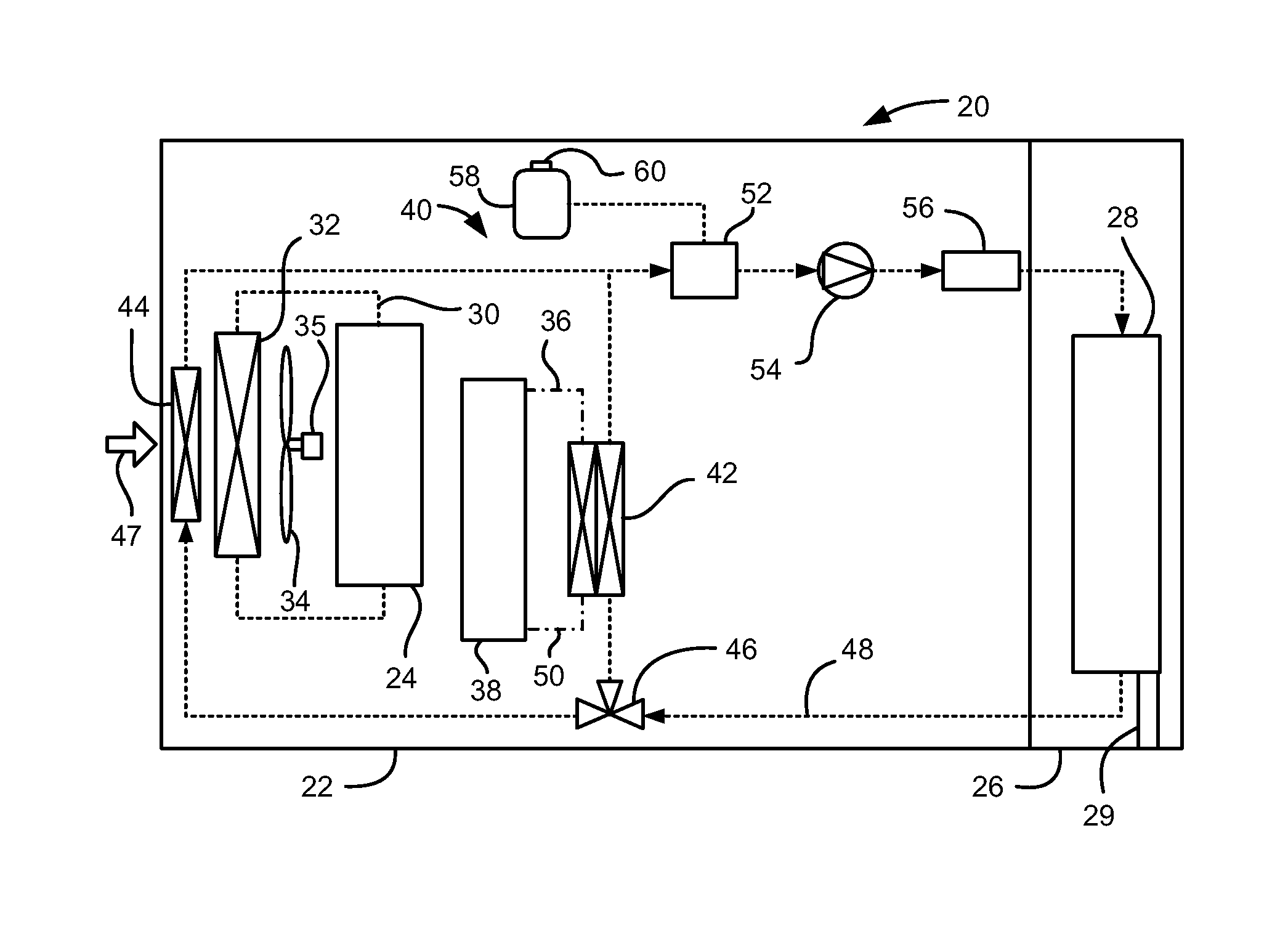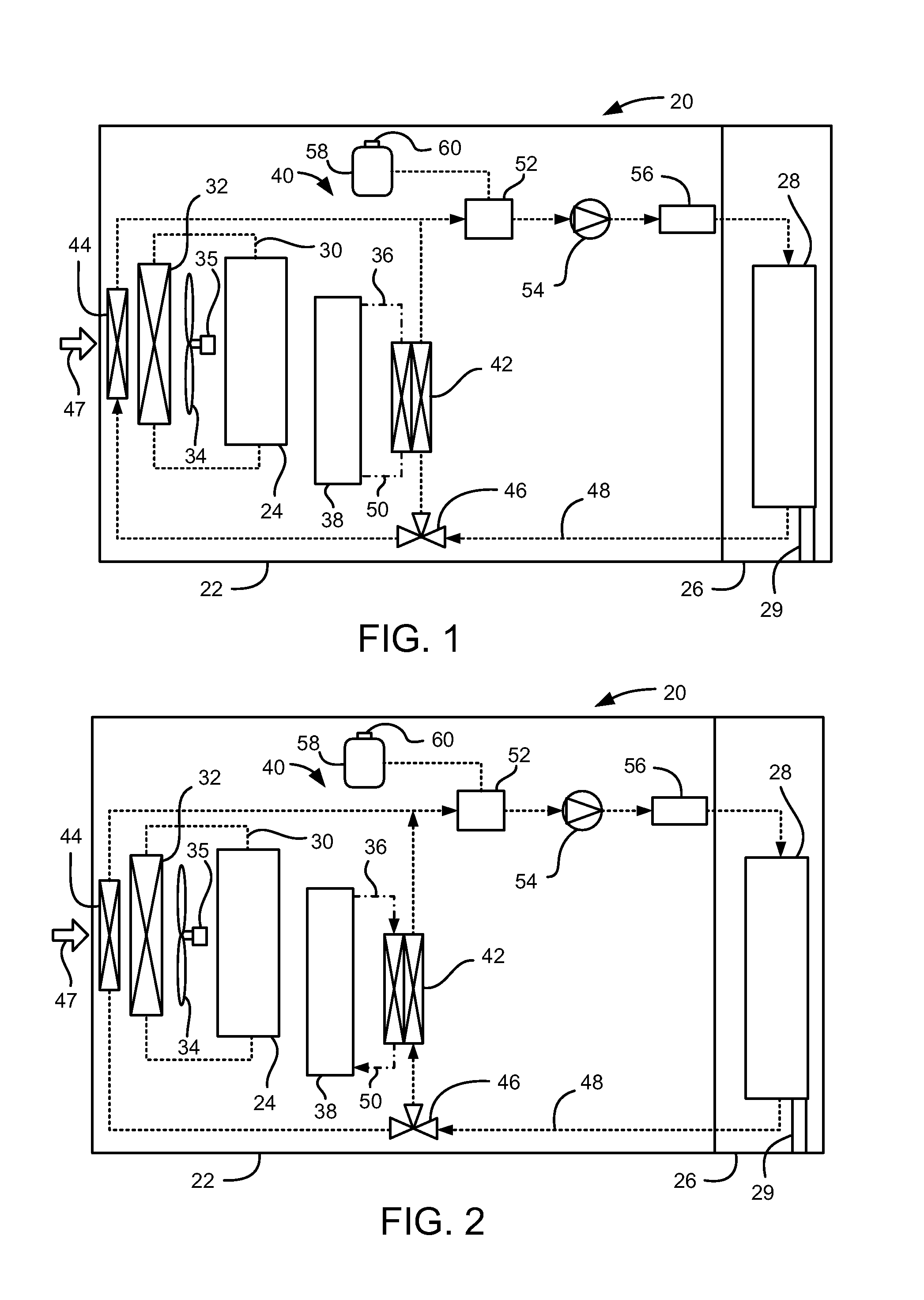Battery thermal system for vehicle
a battery pack and thermal system technology, applied in battery/fuel cell control arrangement, battery/accumulator control arrangement, electrochemical generators, etc., can solve the problems of limited battery cooling capacity, low heat rejection, low heat transfer coefficient, etc., to minimize any reduction in passenger cabin interior space, avoid blockage concerns, and improve heat transfer
- Summary
- Abstract
- Description
- Claims
- Application Information
AI Technical Summary
Benefits of technology
Problems solved by technology
Method used
Image
Examples
Embodiment Construction
[0011]Referring to FIGS. 1-3, a vehicle, indicated generally at 20, is shown. The vehicle 20 includes an engine compartment 22, within which is mounted a power plant 24, and a passenger cabin / cargo area 26, within which is mounted a battery pack 28. Alternatively, the battery pack 28 may be mounted outside of the passenger cabin / cargo area 26. The battery pack 28 may include a plug-in charger 29, if so desired. The power plant 24 may be, for example, an internal combustion engine or a fuel cell. The power plant 24 may have coolant lines 30 extending to a radiator 32, which may be located adjacent to a cooling fan 34. The cooling fan may be driven by an electric motor 35. A refrigerant loop 36 of an air conditioning system 38 may be located in the engine compartment 22. A battery thermal system 40 may also be located in the engine compartment 22. The battery thermal system 40 discussed herein may be employed with a vehicle that has an option of an internal combustion engine or a fuel...
PUM
| Property | Measurement | Unit |
|---|---|---|
| energy | aaaaa | aaaaa |
| heat transfer coefficient | aaaaa | aaaaa |
| temperatures | aaaaa | aaaaa |
Abstract
Description
Claims
Application Information
 Login to View More
Login to View More - R&D
- Intellectual Property
- Life Sciences
- Materials
- Tech Scout
- Unparalleled Data Quality
- Higher Quality Content
- 60% Fewer Hallucinations
Browse by: Latest US Patents, China's latest patents, Technical Efficacy Thesaurus, Application Domain, Technology Topic, Popular Technical Reports.
© 2025 PatSnap. All rights reserved.Legal|Privacy policy|Modern Slavery Act Transparency Statement|Sitemap|About US| Contact US: help@patsnap.com



